






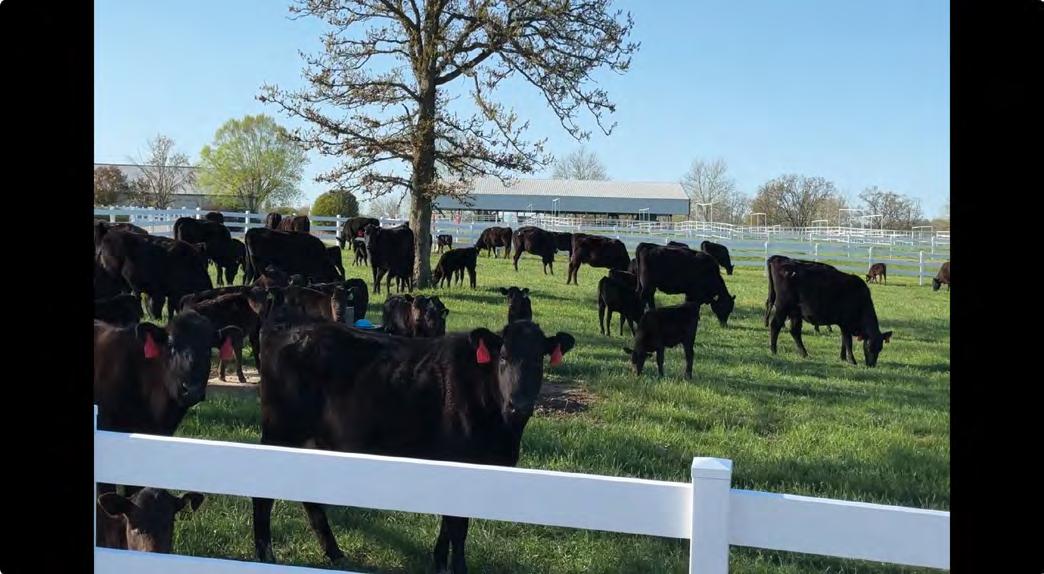



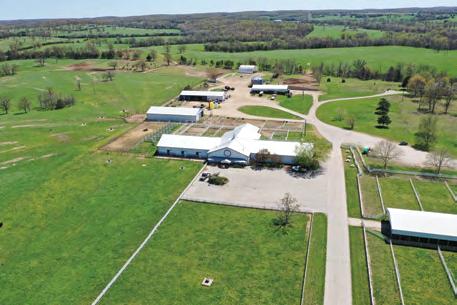













Garrett and Mindy Gross, AGE Media
& IOWA
Bob Fitch, AGE Media
Direct advertising inquiries, story submissions and other correspondence to:
The
The Farming Families is distributed free exclusively to the farmers, ranchers and producers in rural Sioux, Plymouth and Lyon Counties. All rights reserved. Content in this magazine should not be copied in any way without the written permission of the publisher. The Farming Families assumes no responsibility for unsolicited manuscripts or photographs. Content in articles, editorial and advertisements are not necessarily endorsed by The Farming
and
& Promotion.



“Living on a farm is a pretty special way to raise a family,” according to Nathan Van Maanen. He and his wife, Amber, are raising four children on their farm east of Doon.
“Our kids gather up our eggs from the hens and ducks; and they feed the chickens,” said Nathan. “Clayton doesn’t go to school yet, so he comes out and works with me almost daily. Kids learn a work ethic on the farm.”
Amber said, “The kids see the value in growing our own food and raising our own meat. They also help with all the canning and freezing.”
The Van Maanen children like to see calves being born, the chicks and ducklings hatching, and playing with the baby kittens. The kids even help with processing the meat (beef, pork and duck) for the family’s own use. “Oh yeah, butchering pigs is so
fun,” said Alayna, who is eight years old and will be in third grade in the fall at Hull Protestant Reformed Christian School. Noelle is seven and will be a second grader in the fall. Clayton is four and Tristan is one. Noelle’s favorite thing on the farm is riding their horse. Besides hog butchering time, Alayna likes to see calves being born. Clayton said, “I like riding in the tractor and feeding the cows.” Amber added, “Sometimes he’ll ride for an eight-hour stretch in the combine during harvest.”
Alayna is looking forward to showing calves when she’s old enough for 4-H. Her dad showed
equine when he was growing up and her mom showed cattle, pigs and rabbits.
Nathan grew up on the farm site along Highway 75 where they live now. He and Amber lived a couple miles away when they were first married, but moved to the home place when his parents, Marvin and Malinda Van Maanen, built a new house in 2017.
Nathan custom feeds hogs; has a small stock cow herd; and he and his dad feed cattle together. The expense of buying feeder cattle “is a kick right now, but at least the feed bill is not so high. And we’re getting a lot when we sell them. Hopefully moms will keep buying beef at the grocery store and not switch to chicken,” he said. Nathan, his brother, Brian, and Marvin share equipment and labor farming corn and soybean acres.
Amber grew up between Doon and Rock Valley on the farm of her parents, Randy and Pam Kats. “My parents ran pretty much the same operation we have here – I didn’t get thrown into anything new, other than the stock cows. Calving season has been a gravy train this year



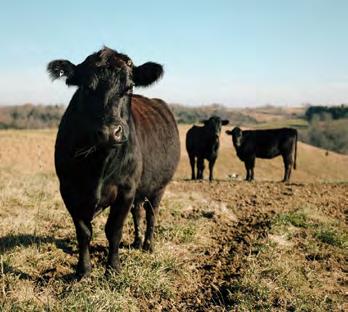


In addition to farm work and caring for the kids, Amber has a side business called The Blessed Barn Co. One of her specialties is this carved dough bowl candle. Each bowl contains a hand-poured, three-wick candle.
compared to last year with all the snow,” she said.
Both went to Western Christian High School, but were two years apart and didn’t really know each other. After high school, Nathan went to Dordt University where
he earned an associates degree. “I wanted to make sure that this is what I really wanted to do. And if I didn't want to do this, I wanted some education or a degree to fall back on,” he said. He started farming fulltime while in college.
The couple crossed paths in 2013. “I had my eye on her,” Nathan said. They dated for a year before getting married in 2014.
Five years ago, Amber accidentally started a hobby business, known today as The Blessed Barn. “It all started as a naptime project. It was something fun to do with Alayna and Noelle, something for me to do other than doing laundry and doing dishes. We had all these crayons, many of them cracked into little pieces. I don’t even remember where they came from. We tried to
make candles from the crayons. We tried a lot of different experiments, but the bottom line is it doesn’t work.”
Undeterred, Amber became intrigued with candles. According to Nathan, “She did a ton of testing with different waxes, different size wicks and different sized bowls.” Amber continued, “Plus I worked with the fragrance oils to figure out their hot and cold throw. It's like a giant science experiment –that didn't always go well. It’s the definition of playing with fire!”
Ultimately, she developed a product different than other homebased candle makers. “We went for something that was a little more unique than just a cotton wick candle in a jar. We make dough bowls and crackling wood wicks candles, which is a best seller. There are three wicks and the















wood bowl is flame retardant,” she said.
Farmers markets were a good avenue to introduce the product to local audiences. Three years ago, online sales were added at www.theblessedbarnco.com. Orders have been shipped all over the U.S., plus Canada, Norway and Spain.
Her candle products can be found locally at Honeycomb Market and Home On Main in Hull; In Clover in Sioux Center; Luxe On First in Rock Rapids; and Gathered Home Goods and Copper Rose in Rock Valley.
She also developed a pantry item called Cream of Anything. It’s made out of corn starch and nonfat dry milk, chicken bouillon, onion flakes, and dried herbs. “I found this recipe in an old cookbook and put in it in our own cupboard. We revised it a little bit and started selling it at
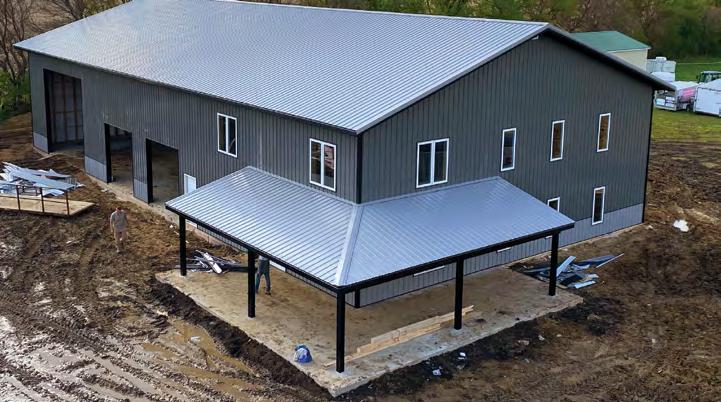


the farmers market a few years ago. Sales just kind of exploded. People loved it. There’s not a lot of produce ready in June, so we needed something else on our table to sell.” The soup base is available to purchase online and is carried by Sunshine stores in Rock Valley and Rock Rapids and HyVee in Sioux Center.
Her product line also includes lotion bars and lip balms made of beeswax from their own hives. “It’s a messy process, a very long process that will never pay for itself. But it’s a fun thing for the kids and me.”
Last year, Amber backed away from farmers markets. Besides the candles, the family was also selling fresh produce, eggs and arranged cut flowers. “I really enjoyed doing the markets. It was fun to get to know customers who loved to come to our booth every single week. You make some pretty good friends. But it takes a lot of time to pick everything, prune some plants, wash the eggs,






“You
just never know what might be a treasure,” says Kim TeGrootenhuis, owner of Junk Rehab in Alton.
Kim can rehabilitate almost any forgotten farm object into something useful or decorative. She loves to create conversation starters. “My motto is rethink, redo, reuse. You never know what you're going to find out there. I love to take a ‘lost object’ – something somebody else would throw away – and bring it back to life. When the right person walks through the door and they’re ecstatic about work I’ve done, it’s an awesome feeling. I enjoy their reaction.” She does all of the rehab work herself, except for any welding work.
Kim got her start in the 1980s and 1990s when crafts and craft shows were really
big. She took her creations on the road and then operated a buy-sell shop called The Old Wagon Wheel in Orange City. “But my true love is rummaging through the junk. The hunt is what I enjoy. I'm not afraid of diving into raccoon poop in the attic of an old house or the loft of an old barn. To find a special piece, I’ll dive right in.”
When Alton holds its junk days, she drives around town to save a table or a set of shelves on the likelihood she’ll have a vision for how it can be reimagined into something a customer will love. “You just never know. Right?”





 DANIEL WINKOWITSCH PRESIDENT
DANIEL WINKOWITSCH PRESIDENT

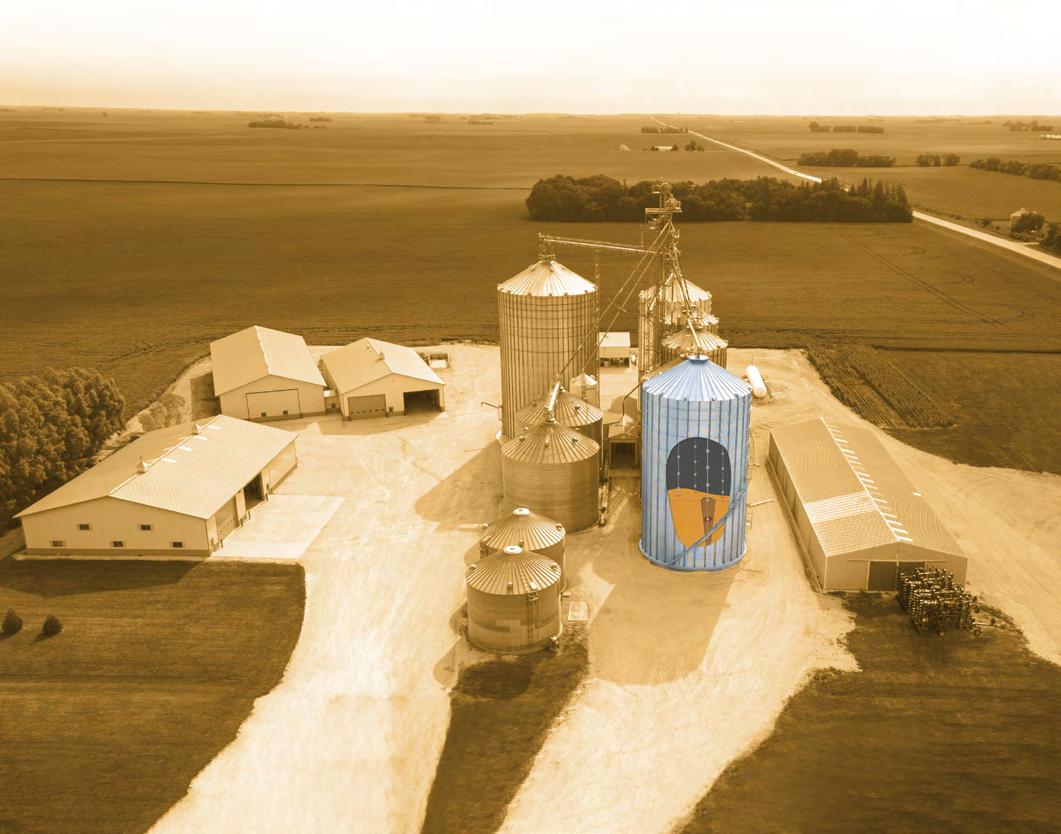

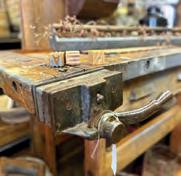

The basement, attic or back room of an old, multigenerational farmhouse is often filled with “raw material” full of “character and personality.” At the invitation of locals moving off the farm, or in cases when children are looking to empty the house of a parent who has died, Kim is happy to look and salvage material that might spark a brainstorm within her. “You know, farmers and farm wives didn’t throw things away.” She attends fewer live auctions than she used to, but actively monitors online auctions for treasures. If she buys something, but doesn’t know what it actually is, some of the local good ol’ boys usually can identify it as something their mom or dad used in days of yore.
Friends or customers will also bring in interesting pieces for her to consider rehabilitating. However, she said, “Sometimes junk is just junk.”
Kim sees potential where others see something for the burn pile. She said old wooden ladders are a good find. People will mount them in their bathroom to be used as towel bars. Others use them as quilt racks. “I sold one to the owner of Headquarters for Hair who is going to place the ladder horizontally for use as a clothes hanger in her little boutique.”
Old suitcases are cut in half and used as “floating shelves.” The head of a rake becomes a hanger for kitchen tools. A chicken feeder or the hub a wagon wheel are transformed into indoor planters.
Kim has a knack for creating interesting rolling bars that are a good fit for “man caves.” She bought 30 furniture dollys and has been marrying them to interesting pieces of antique barnwood or even a cleaned-up workbench, complete with its original vise. “I try to preserve as much as I can.”
One of her weirdest creations was a bar made of an antique metal exam table. “I sold it to a doctor actually. It was so creepy, but it was also awesome.”
Visitors to her shop sometimes say they have to walk around the space five times to be able to see all the fun items she tucks into nooks and crannies. “Our customers keep coming back. I love it when I hear them laugh. You’ve got to have fun in life.” Frequently called “a hidden gem,” she said Junk Rehab is a good stop to enjoy along with having lunch at Alton restaurants, The Train Station or The Yard Bar & Grill.
Kim is a native of Alton. In addition to Junk Rehab, she works at The Eyecare Center in Sheldon. Her husband, Kirk, is a Purina Feed dealer. She has three children and five grandchildren.
Kim opened Junk Rehab about a decade ago on the east end of downtown Alton, in the former hardware and plumbing shop owned by Jim Hentges. As a specialty destination, the shop’s open hours are limited. Visit Junk Rehab this summer on June 7-8, July 12-13, August 2-3 and September 6-7. Friday hours are 1-5 p.m. and Saturday hours are 10 a.m.-3 p.m.








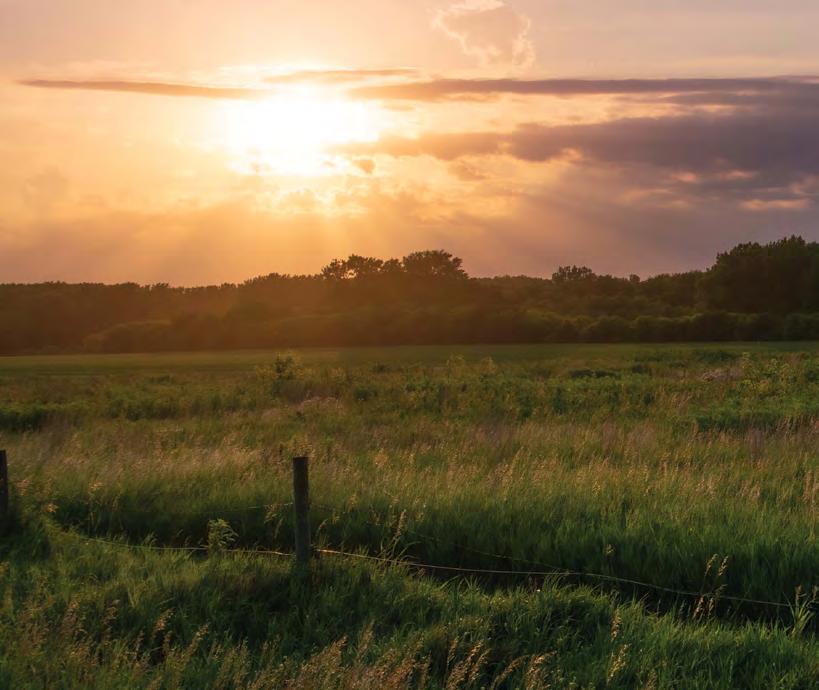





SUMMER FENCELINE
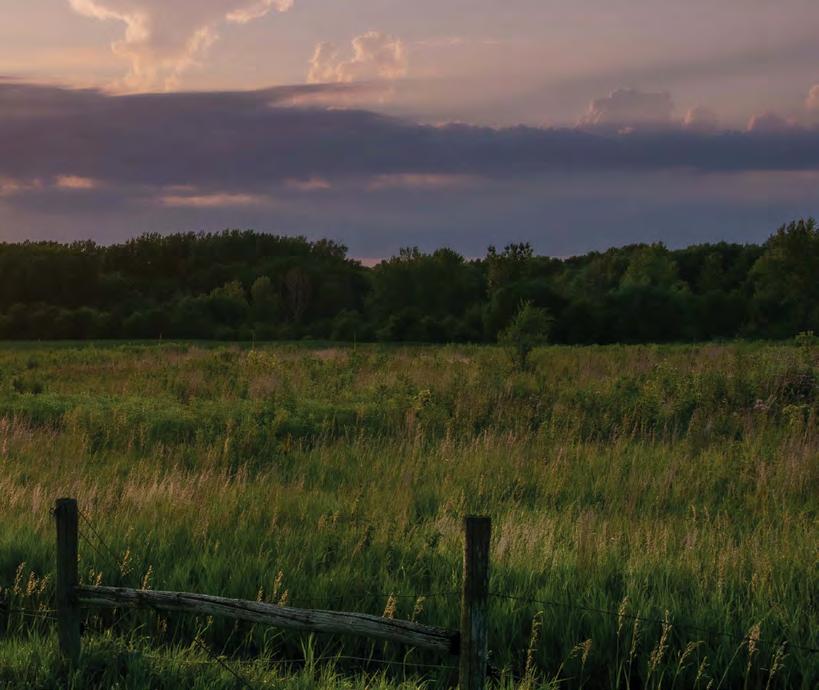




“When I think about our church, a verse comes to my mind from the song ‘Blest Be The Tie That Binds.’ The verse says ‘We share each other's woes, our mutual burdens bear; and often for each other flows the sympathizing tear.’
I just think that's us,” said Susan Konz, 55, a lifetime member of Seney Methodist Church. Her great grandfather was the church’s pastor in 1926 and 1927, almost 100 years ago.
Matthew Vondrak is one of the church’s younger adult members at age 19. Driving up from the Merrill area, he and his family joined his grandfather at the Seney church when Matthew was about 10 years old. “My grandfather appreciated the traditional, small church and my parents were the same way,” he said. The ties that bind have kept him coming. “It’s more of a family than just a church. That’s why I’ve stayed here.”
Darrel Lancaster, 84, said Seney Methodist is a happy family. “Pretty much everybody in this church gets along. There’s no bickering and we don’t have any major fights. You can talk to anybody here. If anything comes up, we close ranks.” Darrel’s great grandfather, William C. Lancaster, was one of the church’s early Sunday school superintendents in the 1870s, after moving here from England.
Earl Albert, 89, has also been a member for more than half of the church’s existence. “I’m not putting down a big church, because there's a lot of good people going to those
churches, too. But it seems like the bond among members is stronger with smaller churches.”
Seney Methodist Church is celebrating 150 years of strong bonds. Current and past members, friends, and past ministers will celebrate at a worship service at 9 a.m. on Sunday, June 9th. The service will be followed by a photo session and luncheon. At 2 p.m., memories will be shared along with cake and coffee. The village of Seney is located about five miles north of Le Mars on Highway 60.


the home of leader Stephen Reeves. In 1871, the group moved its meetings to a schoolhouse located in section 24 of Elgin Township. In 1874, Rev. J.T. Walker, pastor of the Le Mars Methodist Church, helped officially organize the congregation. Services were moved into Seney when a schoolhouse was built in the village in 1876, at which time the church also formally incorporated.
The seeds of the church were planted in 1870 when about 30 MethodistEpiscopalians began gathering at
In 1880, the church constructed its own building, measuring 28 x 40 feet. The same building is still in use, although it has been expanded several times. Railroad official George Seney (for whom the town is named) provided $1,000 of the church’s $1,600 in construction costs. He was also responsible for starting the large grove
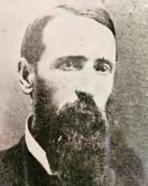


Primebank will work with you to build a financial structure that supports your cash flow and growth objectives.




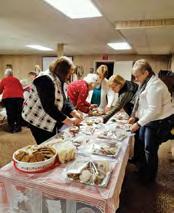
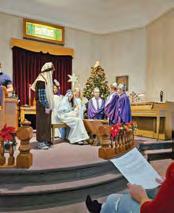



of larch trees, a long-time area landmark that was just south of the church.
For decades, the larch grove was the site for many events, including Sunday school, church picnics, Independence Day celebrations, and a Christmas manger scene. Darrel and Earl can remember church members playing volleyball next to the grove. Another life-long member, Roger Hawkins, 77, remembers when the church had its own softball team (the Seney Sluggers) competing in a church league. “We were actually a pretty decent team. It was a slow pitch league, so you had to have patience for the ball to get there.”
Currently, Seney Methodist doesn’t have a pastor and relies on pulpit supply for Sunday services. For much of its existence, the church has either shared pastors with other rural churches or used students from Westmar College or Morningside College. This reality has made the church very self-reliant. Susan said, “When it comes down to the nuts and bolts of having to do things, it is the board and the people pitching in.” Kathleen Hawkins, 69, agreed: “We are a smaller church and we do a lot of things within the congregation. We have a lot of talents here.” Members sided the church; if cleaning needs to be done, the word goes out and people show up with their mops and buckets; if trees need to be trimmed, others show up with power tools and tractors. Earl remembers in the early









1950s when the church decided to add a basement. “Raising the foundation, re-wiring, plumbing, the whole nine yards, we did it ourselves. Once the plan was in place, the money we needed showed up and we never borrowed a dime.”
Years ago, the church started a chicken dinner as a fall fundraiser. It evolved into a pork chop dinner and is the church’s biggest event of the year – drawing up to 500 people. It falls on the second Tuesday of October and is held in the church basement. “It’s still a successful fundraiser,” said Kathleen. “More importantly, though, it’s a time of fellowship, for bringing both the church and the community together.”
Earl and Matthew both said Seney Methodist Church has always had a strong focus on missions, especially local families and organizations. Kathleen said, “We have a mission of the month we started in 2006. It came out of a Bible study that was really well attended and inspired a lot of us.” Sometimes the support comes in the form of boots-on-the-ground work and sometimes it’s cash donations. The church is quick to respond to disasters in Iowa such as tornadoes and floods. Members have provided assistance to local families who have faced loss from fire or a significant auto accident. They’ve packaged food for Then Feed Just One, served lunch at the Gospel Mission, and financially supported Safe Place, veterans, Adopt a Family and many others.













The mighty Oak Grove Park grew from an acorn of an idea.
Historical records place trappers, early explorers, and surveyors at the “fork,” otherwise known as the confluence of the Sioux and Rock Rivers near today’s Oak Grove Park. But early settlers in western Sioux County generally ignored the forested area and rough, non-tillable hills. In 1889, two would-be miners began a small exploration of the area, mining low grade coal from a pit. It was not profitable and the two left after a year.
Maybe moonshiners made more money in the forest? In April 1921, two local schoolboys, Lawrence Meeter and Philip Smith, discovered an abandoned still when they were out hunting at Oak Grove. In a gully, they found a copper boiler with a sealed top, coils, a cooler and three barrels partly filled with mash.
However, local civic leaders saw the hills and gullies and trees as so much more. “A movement has been launched by the Hawarden Booster Club for the establishment of a state park along the Sioux River,” said a Hawarden Independent article in November 1923. Six years earlier, the Iowa Legislature passed a state parks bill which provided authority to the State Board of Conservation to secure natural areas statewide and preserve the land as near as possible to their original state.
The Hawarden Booster Club believed a state park at Oak Grove would be an asset for the region and state. State Rep. G.L. Venard of Hawarden was the lead advocate and he appeared before the Board of Conservation in Des Moines. The Hawarden boosters spent the winter of 1923-24 crystallizing favorable sentiment amongst the other Sioux County communities.


Plant life in Oak Grove in the 1920s was described this way: “Sunny slope of the prairie is covered with a beautiful lot of prairie flowers, small beard tongue, cessile yellow paint brush, pomme de prairie of the voyagers, pasque flowers, loco weed, cow vetch, yellow and orange puccoon, bird foot violet, etc., sumac, basswood, slippery elm, red haws, American elm, green ash, soft maples, cottonwood and bur oak.”
On June 12, 1924, members of the State Board of Conservation inspected the proposed park area. Local proponents from Hawarden, Rock Valley, Hudson and Sioux Center were onsite to demonstrate broad local support. In July, the board authorized an expenditure of $8,000 in state funds provided the citizens of the county raised a portion of the purchase price and that the land could be secured at a satisfactory price. The county’s $3,000 share was raised from personal donations.


Chad


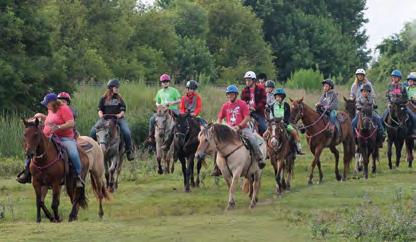


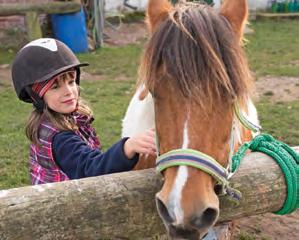




By the spring of 1925 and continuing up to today, reports appeared in many local newspapers about families, ladies’ organizations, church groups, farm associations and others who made trips to Oak Grove for picnics, camping or religious revivals.
More than 600 visitors came for the dedication of the new state park in May 1926. James Younie Sr. was appointed park custodian. During the summers, Younie lived in a shack in the grove near the river. A permanent custodian’s home was constructed in the 1930s and it is still occupied by an SCCB park ranger.
Oak Grove Park has seen many enhancements and upgrades over the years, including the purchase of additional land. Other additions included more open shelters, two all-weather enclosed shelters and a modern campground. In recent years, SCCB has added four cabins in the state park and one cabin at the Big Sioux Park. All the cabins have electricity, heating and air conditioning, and modern restroom facilities with a shower.
One of the greatest enhancements to the park was the addition of Prairie Woods Nature Center which opened in 2020. This environmental education center is a favorite field trip destination for hundreds of local school children each year. The nature center offers an opportunity to gain a better understanding of Sioux County’s geology, environment and history. Interactive exhibits provide information on different habitats including wetland, prairie and forest.
The state of Iowa owns the 101 acres of Oak Grove State Park. Immediately adjacent is 330 acres owned by Sioux County and known as Big Sioux Park. SCCB manages all of it, which is collectively known as Oak Grove Park. Camping or cabin reservation information can be found at www.siouxcountyparks.org.
The official centennial celebration of Oak Grove State Park’s founding will take place on Saturday, June 22. The Prairie Woods Nature Center will be open from 9 a.m.-4 p.m. Programs will be presented during the day. A “cruise through the campgrounds” will start at 4 p.m., ending with a Classic Car Show & Shine on the banks of the river. From 5-8 p.m., there will be food trucks, games and live music by the Singer Family Band. An outdoor movie will be shown beginning at 8:30 p.m.
Sources
• Sioux County Conservation Board. www.siouxcountyparks.org
• Hawarden Independent via Newspapers.com and Sioux County Digital Archives (4-7-21, 11-15-23, 6-5-24, 6-19-24, 11-9-24, 11-19-25, 5-9-29)
• Article by SCCB executive officer Gerald Schiefen published in the1987 book Hawarden Centennial: 1887-1987. Material gathered from the Hawarden Chronicle.
• Iowa State University Library Online.
• Siouxland: A History of Sioux County, Iowa, by G. Nelson Nieuwenhuis. Published 1983 by The Sioux County Historical Society.

Put on a wide-brimmed hat and sunglasses. Seek shade whenever possible. Wear long sleeves and pants when possible. Apply sunscreen as directed to cover all skin not covered by clothing.

From Midwest Dairy

INGREDIENTS:
1 cup crunchy wheat and barley cereal
3 cups fat-free strawberry yogurt
1 bag (10-ounces) frozen unsweetened strawberries (about 2½ cups)
1 cup fat-free sweetened condensed milk
1 cup light or fat-free whipped topping (optional)
During National Dairy Month ― and every month ― we thank dairy farmers for the hard work you put in every day. Trust in Tomorrow.® “Trust in Tomorrow.” and “Grinnell Mutual” are registered trademarks of Grinnell Mutual
DIRECTIONS:
1. Line an 8×8-inch baking pan with foil. Sprinkle cereal evenly on the bottom of the pan; set aside.
2. Place yogurt, strawberries and condensed milk in a blender; cover and blend until smooth. Pour the mixture over top of cereal, gently smoothing yogurt mixture to edges of pan. Cover with foil (or plastic wrap) and freeze for 8 hours or until firm. Use edges of foil to loosen and remove from pan; let recipe thaw for 5 to 10 minutes. Cut into squares, top with whipped topping, if desired, and serve.
3. Storage tip: Squares may be individually wrapped and frozen for single servings.
4. Create your own variations by using other flavor combinations of yogurt and fruit.














